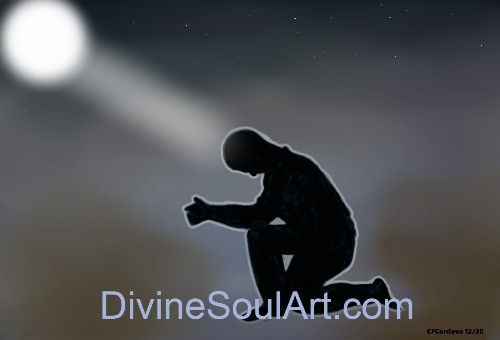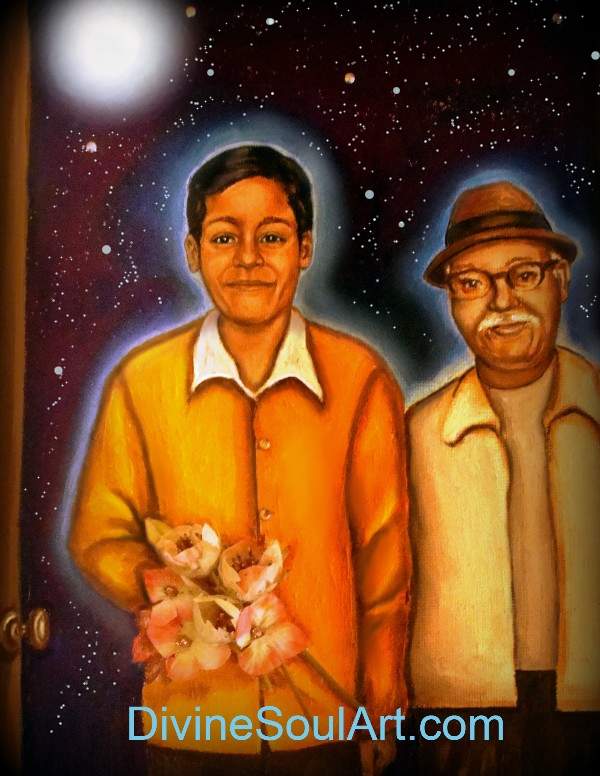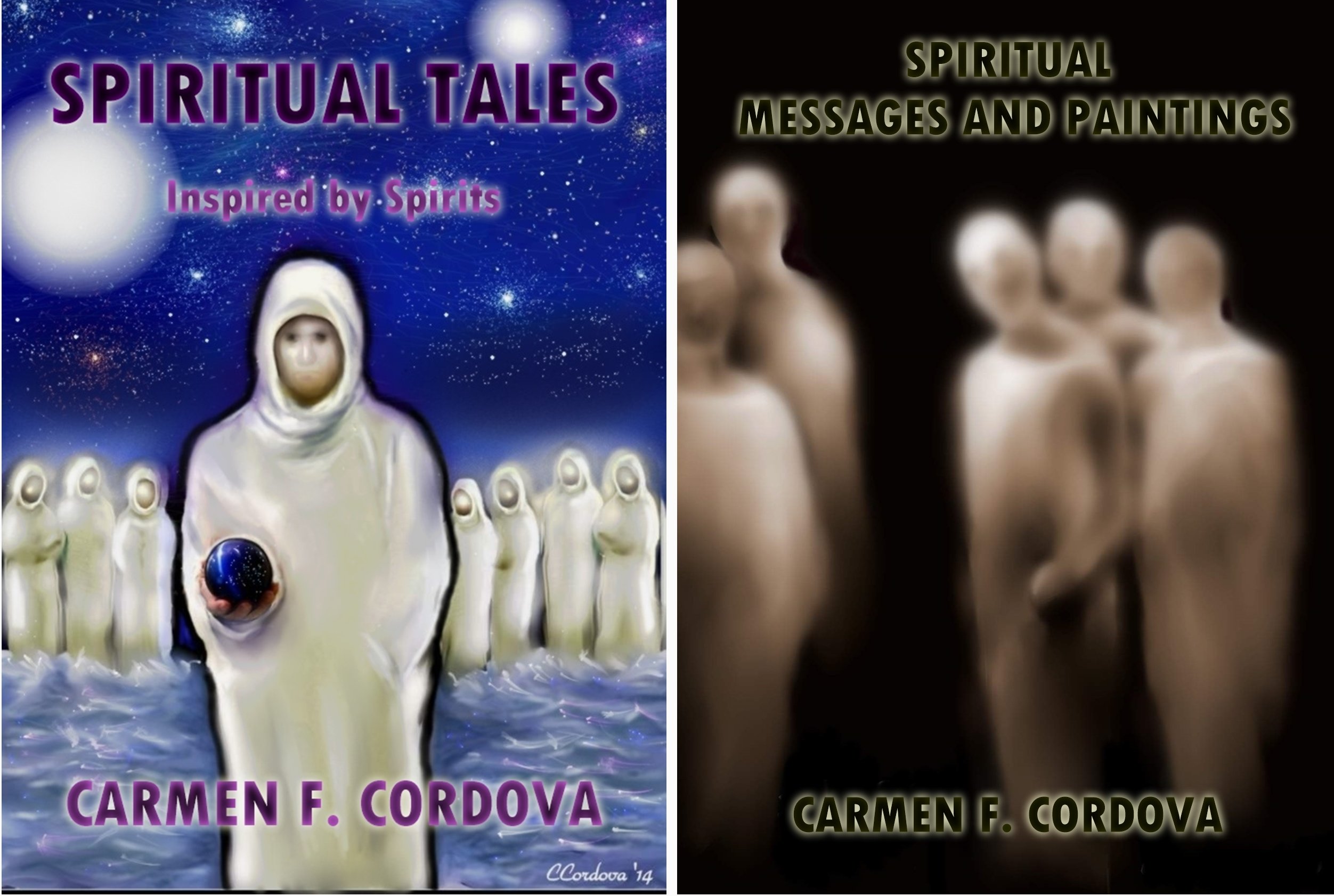Can the Dead Hear Us When We Speak to Them?
 Praying for Dead People - including deceased loved individuals
Praying for Dead People - including deceased loved individualsCan the dead hear us? This question weighs heavily on many, especially those who are mourning a loss. In this article, we explore religious teachings, personal experiences, and scientific theories to examine this profound question. Discover various perspectives on whether our messages and thoughts can reach those who have passed away.
Exploring Scriptural Insights
Scriptures often offer profound insights into the mysteries of life and death. The Bible and the Qur’an, two of the world’s most revered religious texts, provide perspectives that can guide us in understanding whether the dead can hear us. Christian martyrs in Heaven, for instance, are depicted as being aware of earthly events, suggesting a form of ongoing connection. Similarly, the Qur’an highlights that deceased prophets have a unique awareness, as described in Sura 3:169, which speaks of their life in Barzakh. These scriptural insights open a window into the possibility of communication with our loved ones.
Different interpretations among scholars add depth to these perspectives. While some believe that the martyrs in Heaven have a clear view of earthly happenings, others suggest a more symbolic interpretation of their awareness. Together, these religious viewpoints encourage us to consider the potential for continued dialogue and emotional ties with those who have passed away.
Biblical Perspectives
 King Saul consulting a medium to talk to the Holy Prophet Samuel
King Saul consulting a medium to talk to the Holy Prophet SamuelWhile the Bible does not categorically state that the dead can hear us, the idea that loved ones in Heaven are aware of earthly events can foster a sense of ongoing relationship and support for the living. This belief can be a source of comfort and faith, reinforcing the notion that our voices and actions may still resonate with those who have gone before us.
Qur'anic Views
Visiting the graves of loved ones, especially after sunrise on the day, is believed to allow the deceased to hear the living, though they cannot reply. This practice reinforces the idea of a one-sided communication, yet it provides a sense of closeness and emotional bond. Many choose to visit the graves as a way to honor their memories.
The concept of‘Sama’al-Mawta', which refers to the hearing of the dead, adds further depth to our understanding of their awareness and connection to the living.
Personal Experiences and Beliefs
Personal experiences and beliefs significantly influence our understanding of communication with the deceased. Many individuals believe that their departed family members can send messages through various signs and symbols, which strengthens the emotional bond between the living and those who have passed away. This belief is not merely a comforting notion; it is a common human behavior observed after a loss. Engaging in activities such as sharing memories and honoring loved ones helps to preserve these emotional connections.
Feelings of loneliness are common emotional responses people experience after losing a loved one. Talking to the deceased, even if they can't hear, is a powerful way to maintain these bonds.
Connecting with Loved Ones
Many individuals express their emotions through prayers, hoping that their feelings and messages reach their loved ones who have passed away. These intimate experiences provide comfort and foster a sense of ongoing connection, helping individuals navigate their grief.
Stories of maintaining a bond with dead people are as diverse as they are abundant. Some people report feeling a profound bond with their loved ones, often experiencing their presence in meaningful ways. Whether through dreams, signs, or simply the feeling of their presence, these moments offer solace and reassurance during the grieving process.
Faith in eternal life reassures individuals that their relationships with loved ones continue beyond physical death.
Their belief in reuniting in the afterlife offers significant comfort to those grieving.
Many believe that comforting practices, such as talking to or writing letters to deceased individuals, can provide emotional support and help maintain a bond during the mourning process. Writing letters to the deceased allows individuals to express unresolved feelings and fosters a sense of closeness.
These therapeutic practices help individuals articulate their grief and maintain a personal bond with their loved ones, facilitating the healing process
Signs and Symbols from Loved Ones
 signs from a dead person
signs from a dead personSigns and symbols from deceased individuals are often interpreted as messages from beyond, providing comfort and reassurance. Research indicates that the brain continues to process feelings and memories connected to loved ones, often causing individuals to feel their presence even after death. Being receptive to these signs can facilitate a sense of continued communication, helping to alleviate feelings of grief.
Requesting signs can open pathways for perceived communication from loved ones who have passed. Being open to receiving signs can enhance the bond with those who have departed, creating a deeper sense of presence and comfort.
Meaningful Coincidences
Unexpected events that resonate with individuals are often interpreted as messages from loved ones, providing comfort and reassurance. Events that align in significant ways, such as hearing a deceased person’s favorite song unexpectedly, are viewed as messages from the afterlife. These meaningful coincidences offer solace and a sense of connection with those who have passed.
Many believe that certain signs, like finding a feather or seeing a butterfly, can serve as messages from those who have passed away. These nature-related symbols are interpreted as evidence of affirmations from loved ones, reinforcing the belief in ongoing communication.
Visits and Dreams
Dreams involving loved ones, known as visitation dreams, are often described as more vivid and memorable compared to regular dreams. Many report experiencing vivid dreams where they feel connected with their loved ones, often interpreting these encounters as significant messages or visits from the afterlife.
These dreams provide comfort and closure, helping individuals process their grief. Some claim to have felt an overwhelming sense of peace during these dreams, suggesting an emotional connection beyond life.
These vivid sensory experiences are a form of psychological adaptation to loss, offering solace and reassurance during the grieving process.
Strengthening the Bond
Strengthening the bond with loved ones can provide immense comfort and support during the grieving process. Engaging in rituals such as lighting candles or creating memorials is a common method used by the bereaved to maintain a bond with their loved ones. These practices help keep the memory of the deceased alive and provide a sense of closeness.
Writing letters to a deceased person can help individuals articulate their feelings and facilitate the grieving process. Being real, raw, and honest in communication allows for a therapeutic release of emotions, fostering a continued bond with the deceased.
Speaking Their Name
Saying the names of loved ones can help individuals feel connected to them in a meaningful way. Speaking their name out loud serves as a practice to strengthen the bond between the living and the dead person. Ongoing dialogue and remembrance through speaking their names can facilitate healing in the grieving process.
By verbalizing their names, we honor their memory and keep their presence alive in our lives. This simple yet powerful act helps maintain a sense of union and provides comfort during times of grief, giving a voice to our memories and allowing us to speak their names.
Writing Letters
 Writing a letter to a dead person
Writing a letter to a dead personWriting letters to a deceased person is a profoundly therapeutic practice. It allows individuals to express unresolved feelings and articulate their grief, providing a sense of connection and emotional release. This practice facilitates the completion of unspoken conversations and provides a means to express things that were left unsaid.
In this letter, individuals can be as candid and honest as they need to be, pouring their hearts out without fear of judgment. This act of writing can transform pain into peace, as it provides a tangible way to communicate with those who have passed on through the written word, no matter the circumstances.
Asking for Signs
Asking for signs from a deceased person is another way to seek a bond. This practice involves requesting specific signs or symbols that can be interpreted as messages from the beyond. Being open to receiving these signs can enhance your bond with them, creating a sense of ongoing presence and communication.
These signs can manifest in various forms, such as:
- Finding a particular thing
- Experiencing a specific event
- Even through dreams. By asking for and recognizing these signs, individuals can find comfort and reassurance that their loved ones are still watching over them, providing a sense of security.
The Role of Faith and Hope
Faith and hope play a crucial role in maintaining connections with loved ones. The belief that love and emotional bonds persist beyond physical separation provides immense comfort during the grieving process. Faith serves as a source of strength, reassuring believers that their loved ones are still with them in spirit, even if they are not physically present.
Religious texts often caution against attempting two-way communication with the deceased, but they do emphasize the importance of prayer and heartfelt communication with God. This spiritual connection offers hope and peace to those who have died and are mourning, helping them cope with their loss and find solace in the belief of an eternal bond.
Praying to God
 praying for dead people
praying for dead peoplePraying to God is a powerful way to communicate with loved ones. Many people believe that God hears their messages and sentiments for those who have passed away. This practice is driven by the emotional desire to express love and maintain a bond with the deceased, providing comfort and solace during difficult times.
Through prayer, individuals can share their thoughts, feelings, and messages, trusting that their loved ones can sense the air of their heartfelt communication. This act of prayer reinforces the belief that love transcends the boundaries of life and death.
Faith in Eternal Bond
The belief in an eternal bond with the deceased is rooted in strong emotional bonds, love, and memories. This faith suggests that love never dies, and the bond remains intact even after physical separation. Believers find comfort and reassurance in the notion that their relationships with loved ones continue beyond death.
These beliefs provide essential comfort to those grieving, allowing them to cope with their loss and find peace in the idea that their loved ones are still with them in spirit. The faith in an eternal bond offers a sense of continuity and hope, helping individuals navigate the grieving process with strength and grace.
Can the Dead Hear Us?
Case Study
 Dead people - deceased loved one
Dead people - deceased loved oneMany years ago, before I was involved in spirit paintings, a woman asked me if I could create a portrait of her son, who had passed away several years earlier. I told her that I had never painted a portrait and that I wasn't that type of artist. I was just an amateur who painted for my own enjoyment. That ended our conversation.
That night, however, I couldn't stop thinking about our discussion. The next day, I called her back and told her I would be willing to try. She was elated. A few days later, she sent me a picture of a little boy.
As soon as I received the picture, I started working on the new project. However, as I began creating the portrait, I felt utterly lost. By the end, I had crafted a picture of the little boy. Although it wasn't a replica, there were some similarities to the photo. The more I studied the image, the more dissatisfied I became. I had a sense that something was off. At one point, it felt as though the boy's spirit was trying to communicate with me, as if he were telling me I was completely off and wanted to show me how he truly looked.
I began to envision the little boy, but older. So, I decided to start the painting again, this time allowing the energy of the spirit to guide me. I felt inspired to add flowers as a gift from him to her, as well as her father, who was also in the spirit world and whom she missed immensely. I was completely surprised by the finished product.
I promptly sent her a copy of the painting and eagerly awaited her response.
The following day, I received the email I had been eagerly awaiting. In her message, she said she cried the entire day. She conveyed her astonishment at the striking resemblance between the young man and her older brother, noting how their shared features seemed almost uncanny. She went on to reveal a deeper, more personal longing: she had been secretly wishing and praying to see what her son looked like now that he would have been a young man.
She wrote:
"Today, I received the painting. I don't know what to say. You have left me speechless with the painting. I am beyond pleased. I keep staring at it and talking to them. Thank you for taking the time to do this for me. I will never be able to repay you for what you did, but all I can say is God bless you. I never thought I would receive such a beautiful portrait of my family. I have been crying since I took the picture in my hands, but they are tears of joy. I feel a closeness to my loved ones like never before. I have my son and my father in my heart and mind more than ever. I would have never seen my son in an older stage if it weren't for you. It was something I prayed for all the time. He was listening to me. He reminds me so much of my brother. Thank you, thank you, thank you. May God bless you always.
P.S. I will treasure this painting forever.
Love, L"
For years, she had held onto the hope of receiving a sign from him, a glimpse of reassurance that he was doing well. Each day, she offered her prayers, yearning for a connection—any indication that he could hear her. Although she prayed fervently, she had never received a response, which left her disheartened. Often, she found herself lost in thought, wondering if her son could hear her prayers and feel the love that flowed from her. She longed for any form of communication that could bridge the distance between them.
This is a clear example that our loved ones hear and see us. She secretly wished to see her son at the age he would be now. He listened to her wish and made it possible. They are closer to us than before. They hear and see us. They have not forgotten us.
We must remember that death is not the end; it is just the beginning.
Summary
 Jesus, Holy Prophet Moses and Holy Prophet Elijah
Jesus, Holy Prophet Moses and Holy Prophet ElijahIn summary, the belief that the deceased can hear us when we speak to them is deeply rooted in scriptural insights and personal experiences. Whether through religious teachings, personal stories, or comforting practices, the bond with our deceased loved one who has passed away remains a powerful and enduring aspect of human existence. This bond offers comfort, support, and hope, helping us navigate the complexities of grief and loss. By embracing these beliefs and practices, we can find solace in knowing that our loved ones are still with us—in spirit and memory—hearing, seeing, and guiding us every step of the way.
Click below and views more than 600 pieces of spiritual artwork

Spiritual Books
If you enjoy the articles on this website, you will also appreciate the short stories in the books below. Click here and continue the journey.



